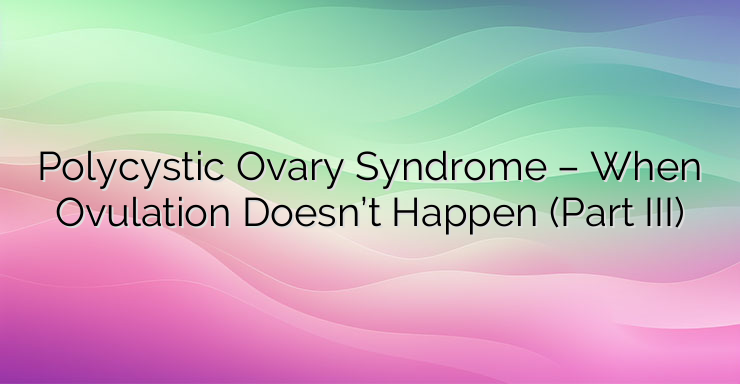Second part of the material For the diagnosis of polycystic ovary syndrome, tests are prescribed for: testosterone and androstenedione – their values are indicative of PCOS, luteinizing and follicle-stimulating hormone – the ratio between them is also assessed. A high (three times) LH:FSH ratio is considered an indicator, although it occurs in only one fifth of cases of polycystic ovaries, estradiol, estrone, prolactin, DHEA-C (dehydroepiandrostenedione sulfate), 17-hydroxyprogesterone – in PCOS this hormone is normal, it is measured in the follicular phase on an empty stomach in the morning around 8 o’clock, cortisol – its elevated values require a dexamethasone suppression test – 1 mg of the drug is taken around 11 o’clock in the evening, the test is carried out in the morning around 8 o’clock. In polycystic ovary syndrome, it is often below 5 ug/dL (140 nmol/L). The following are also carried out: urine pregnancy test – to rule out pregnancy, due to some overlapping features in the hormonal levels; bad (LDL) and good cholesterol (HDL) and triglycerides – in burdened patients falling into the risk groups, overweight, when the presence of metabolic syndrome is suspected, rather for the prevention of cardiovascular diseases, blood pressure control is required . oral glucose-tolerance test (blood sugar test with glucose load) – with normal carbohydrate exchange, fasting blood sugar values (first measurement) are up to 6.1 mmol/L. Values above this limit indicate the presence of disturbances in carbohydrate metabolism, and above 7.0 mmol/L, in two different measurements, a pathological problem. insulin resistance – the test is generally not considered necessary, it is recommended in women with excess weight, high androgens and amenorrhea. The test for insulin resistance is prescribed for: accumulation of fatty tissue in the abdominal area, waistline over 88 cm; HDL-C cholesterol under 50 mg/dL, triglycerides over 150 mg/dL, blood sugar 110-126 mg/dL fasting and /or at the second hour 140-199 mg/dL from the oral glucose tolerance test. Treatment Treatment for polycystic ovary syndrome is aimed at preventing complications in the long term. Therapy is needed to regulate the hormonal picture and disturbances in the metabolic processes in order to restore ovulation and prevent infertility. Complications The syndrome requires treatment even when the creation of a generation is not aimed at. The resistance of the body to insulin, which is observed as the disease process progresses, becomes the cause of problems in the exchange of lipids. Elevated cholesterol and triglycerides increase the risk of cardiovascular disease. Uterine bleeding outside of menstruation can also be due to polycystic ovary syndrome. Left untreated, the condition is thought to predispose to the development of endometrial cancer, endometrial hyperplasia and breast cancer.


Leave a Reply